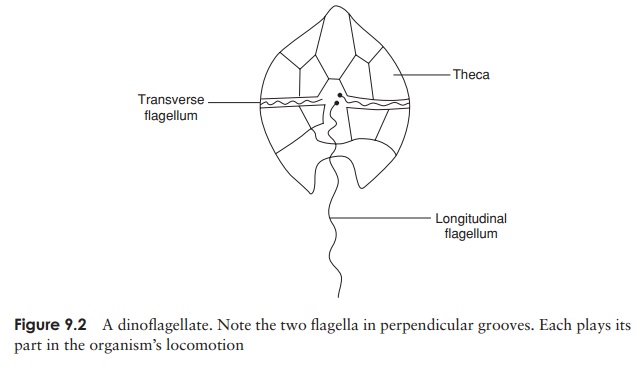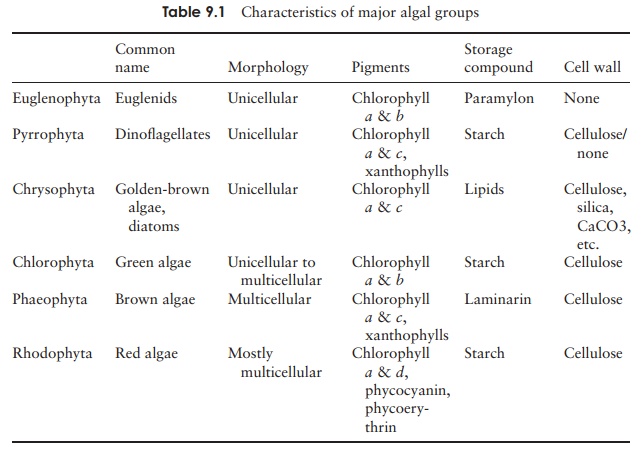Chapter: Essential Microbiology: Protista
Dinoflagellata - Structural characteristics of algal protists

Dinoflagellata
The dinoflagellates (also known variously as
Pyrrophyta, or ‘fire algae’) are chiefly marine planktonic types, comprising
some 2000 species. This is another unicellular group, but one whose cells are
often covered with armoured plates known as thecae
(sing: theca). They are generally biflagellate, with the two dissimilar
flagella lying in part within the longitudinal and lateral grooves that run
around the cell (Figure 9.2). The beating of the flagella causes the cell to
spin like a top as it moves through the water (the group takes its name from
the Greek word ‘to whirl’). Although many non-photosynthetic
(chemoheterotrophic) types exist, most dinoflagellates are photosynthetic,
containing

As a group, they are
second only to the diatoms as the
primary photosynthetic producers in the marine environment. Some
dinoflag-ellates form endosymbiotic relationships with marine animals such as corals
and sea anemones; these are termed zooxanthellae.
An unusual feature of dinoflagellate ultra-structure is that the chromosomes
contain little, if any, histone protein, and exist almost permanently in the
condensed form.
Some tropical species of dinoflagellate emit light,
the only algae to do so. Due to an enzyme–substrate (luciferin–luciferase)
interaction, this can cause a spectac-ular glow in the water at night,
especially when the water is disturbed, for example by a ship. Bioluminescence of this kind has proved
to be a useful ‘tagging’ system for cells in biological research. Other marine
dinoflagellates can produce metabolites that act as nerve toxins to higher
animals. Shellfish such as mussels and oysters can concentrate these with no
harm to themselves, but they can be fatal to humans who consume them.
Sometimes, when conditions are highly favourable, an explosion of growth
results in the development of huge ‘red tides’ of dinoflagellates in coastal
waters. This produces a build-up of toxins, and may lead to the death of
massive numbers of fish and other ma-rine life. The greatly increased incidence
of these blooms in recent decades is probably due to pollution by fertilisers
containing nitrates and phosphates.
Reproduction by asexual means involves binary
fission. In armoured forms, the theca may be shed before cell division, or
split along suture lines; in either case, daughter cells must regenerate the
missing sections. Sexual reproduction is known to occur in some
dinoflagellates, and is probably more widespread. Gametes produced by mitosis
fuse to produce a diploid zygote; this undergoes meiosis to reinstate the
haploid condition in the offspring. In some species we see isogamy, the fusion of identical, motile gametes, while in others, anisogamy occurs, in which gametes of
dissimilar size fuse. Fusion may occur between genetically identical gametes,
or only when the gametes come from genetically distinct populations.

Related Topics